| Dissolving views (part 2) |
| Dissolving views, as the name implies, dissolve into each other. To achieve the changeover we usually need two lanterns, or a double- or triple-lantern, because there are at least two pictures to display; for example one slide depicting a landscape in summer, the other the same landscape in winter. | |
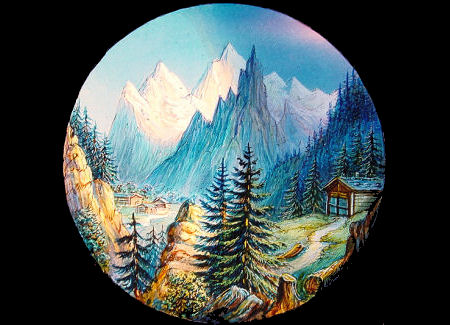 |
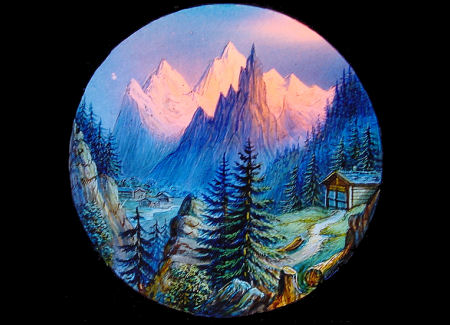 |
 |
|
|
This is a fine example of a dissolving effect that makes use of only
one picture slide. It shows a mountain side from dusk to dawn. The
changing view is caused by a coloured strip of glass that one has to
slide in and out the wooden frame, thus colouring the clouds from a
clear sky to blue to a deep pink. Considering that the picture glass is
only 2.5 inches (almost 6.5 cm) in diameter, this piece is a striking
example of miniature painting on glass. The frame measures 11 x 4.25 inches
(24 x 11 cm). |
|
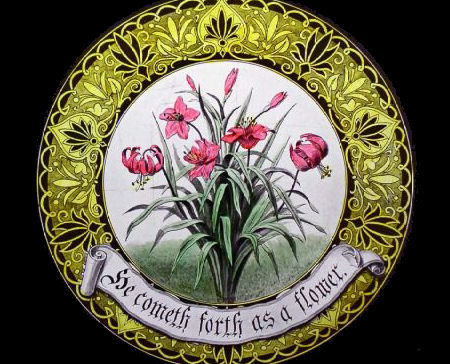 |
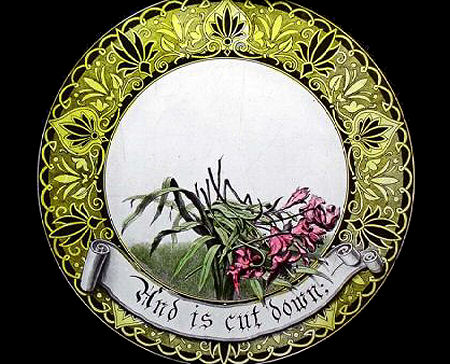 |
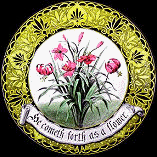 These are a dissolving pair of slides for use in the Masonic fraternal organization. They are lovely in the colouring and the very Victorian sentiment. "He Cometh forth as a flower" is probably a Biblical reference, as is the "And is cut down.". |
|
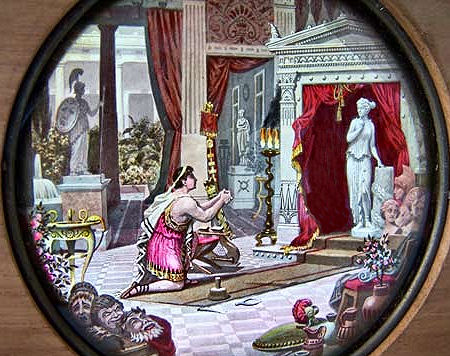 |
 |
|
Dissolving views of the Greek myth of Pygmalion and Galatea. Galatea was the ivory creation of a brilliant artist named Pygmalion, who lived on Cyprus. He hated and abhorred women and promised himself that he would never get married. Perhaps in trying to create a perfect woman, Pygmalion sculpted a work of art. The statue he created looked very much alive and he perfected it each and every day until there was nothing left to perfect. The statue was beautiful and Pygmalion fell in love with it. He began to realize how lonely he was when his kisses and caresses where not returned from the inanimate object. Aphrodite, the goddess of love, was very much impressed by this original and devoted love and decided to make Pygmalion's wish come true. When Pygmalion returned to his home, he walked over to touch his statue and discovered that it was warm to the touch. So he kissed it, and its lips became soft. His creation was coming to life before his eyes! He joyfully thanked Aphrodite. She was present at their wedding, and Pygmalion and Galatea had two children, Paphus and Metharme. Framed in mahogany with a label: 'Dr. A. H. Gilson, Quincy, Mass AKA Dr. Gilson Up in Boston'. c. 1860-70. Size 7 x 4 x 3/8"; glass: 3" diameter. |
|
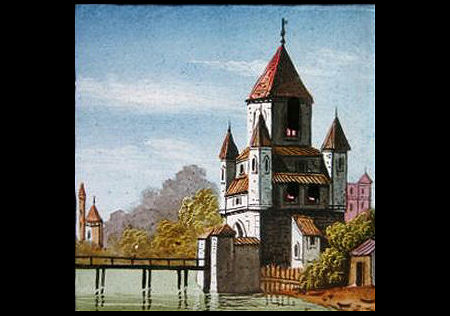 |
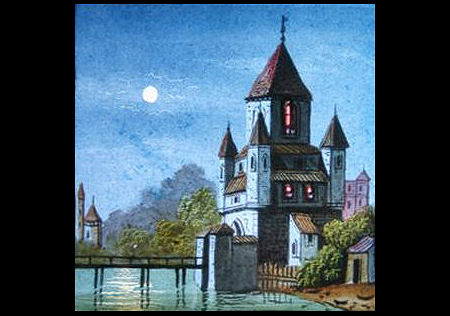 |
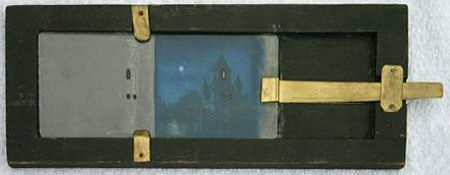 |
Hand painted magic
lantern slipping slide of a building changing from day to night. A very
effective and attractive way to produce a dissolving view. (28.5 x 11.5 cm) |
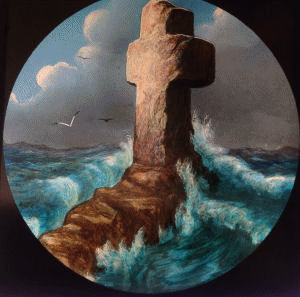 Hand-painted dissolving slides of the popular Christian Hymn 'Rock of Ages'. Rock of Ages, cleft for me, Let me hide myself in Thee; Let the water and the blood, From Thy riven side which flowed, Be of sin the double cure, Cleanse me from its guilt and power. The slides were also very popular with religious organisations like the Band of Hope and the Salvation Army who used them to attract people to their meetings. The slides are produced in a lot of slightly different variations. Right: Outdoor projection of the Rock of Ages slides on the side of a large building in Melbourne by the Australian Salvation Army, 1894. |
 |
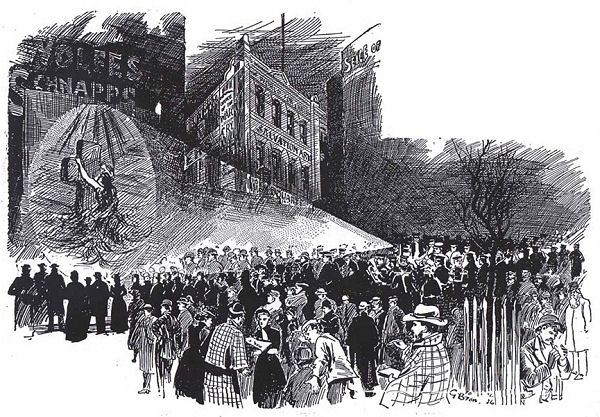 |
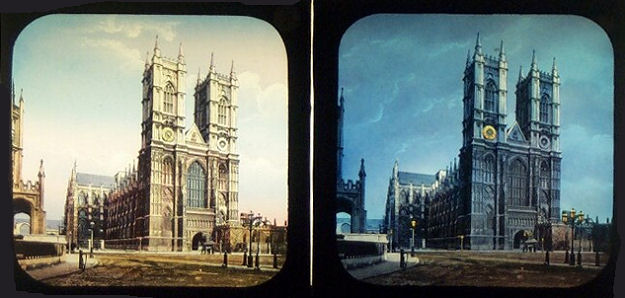 |
These British photographic hand tinted magic lantern slides measure 3.25 inches (8,2 cm) square and probably date from the 1890s. They show Westminster Abbey, London. | |
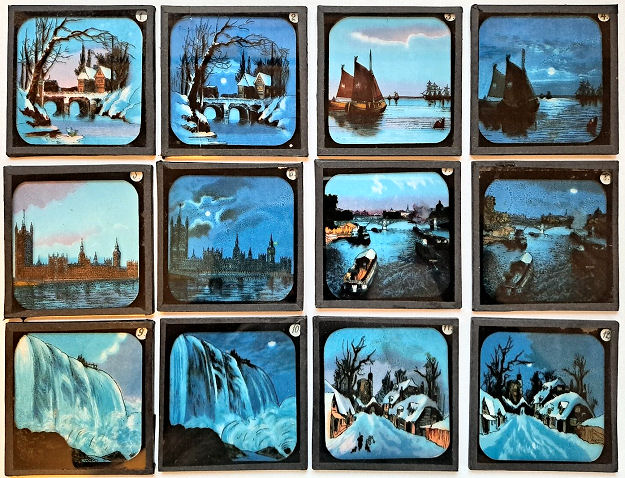 |
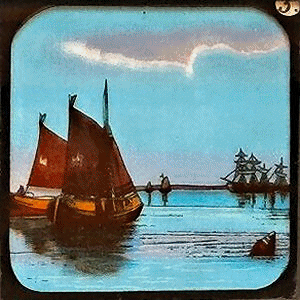 |
|
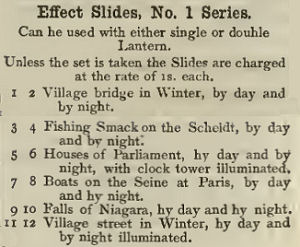 |
||
| This set of 'Night and Day' dissolving views was made by Theobald & Co. This is part 1 of set number 31. The complete set consists of three parts of 12 slides each. | ||
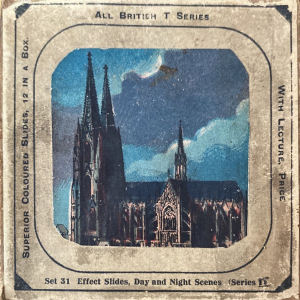 |
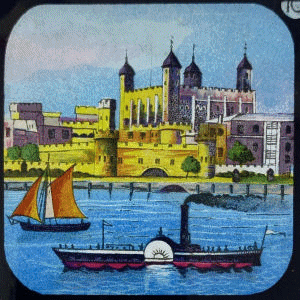 |
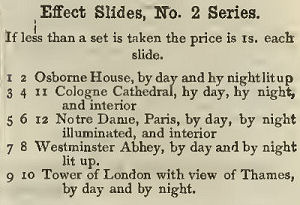 From the Theobald Catalogue. |
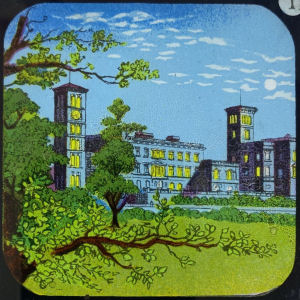 |
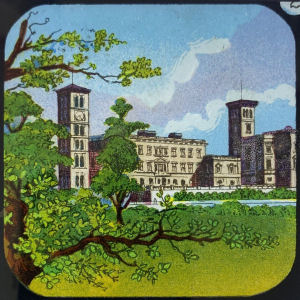 |
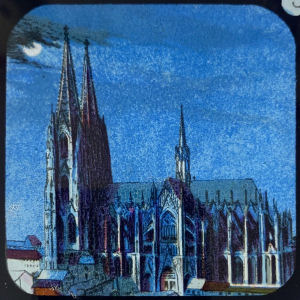 |
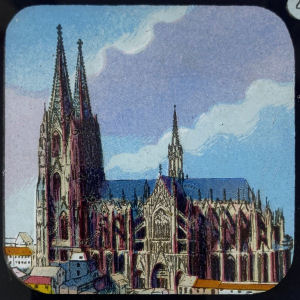 |
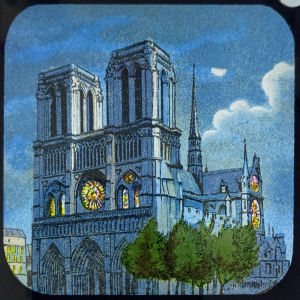 |
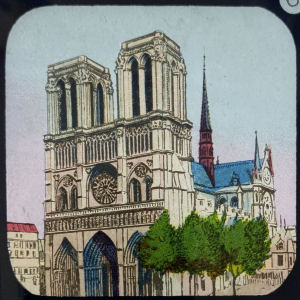 |
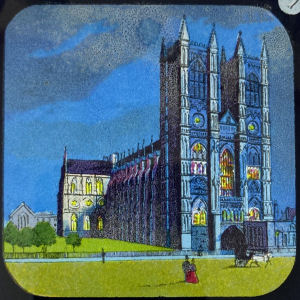 |
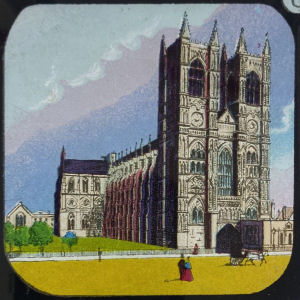 |
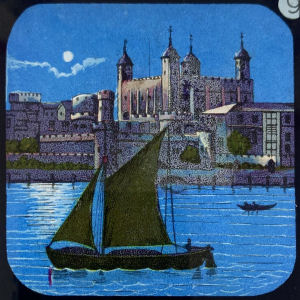 |
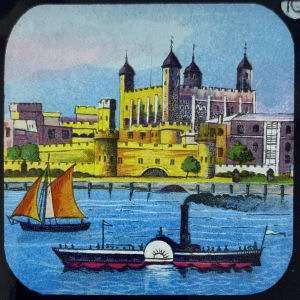 |
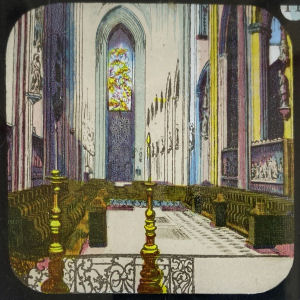 |
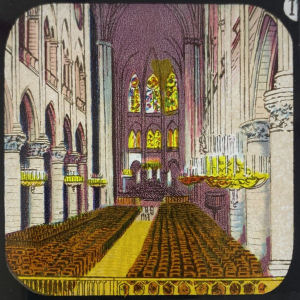 |
|
This series of 12 effect slides was also made by the
English company Theobald & Co. in their 'All British T-series'. Set no 31 consists of three parts, of which this is the second with five 'Day and Night Scenes'. Two scenes consist of three slides because an interior photo has been added. On the right the contents of the third part; the slides are not yet present. |
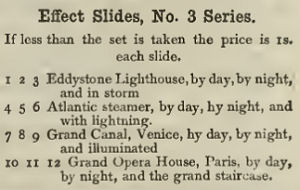 |
|
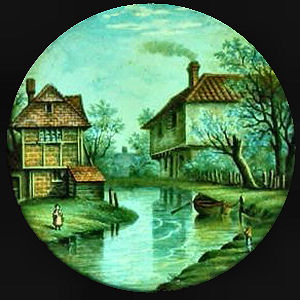 |
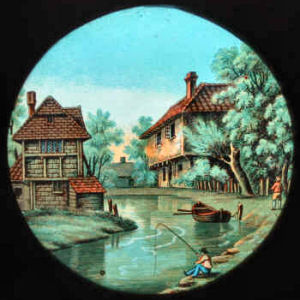 |
 |
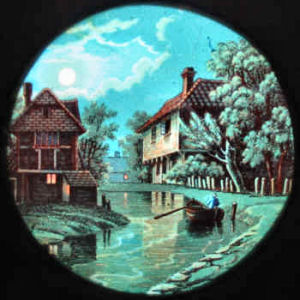 |
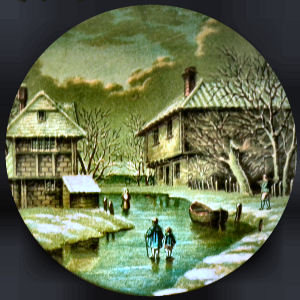 |
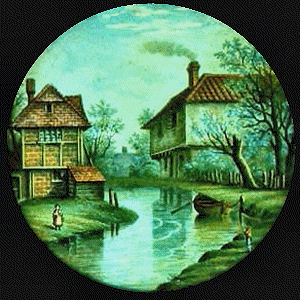 |
 |
A five part dissolving view of a picturesque landscape with a watermill
made by Barnard and Son, London. They are titled 'The Saesons' and are
numbered 1 - 5. The round pictures are mounted in a wooden frame. |
|
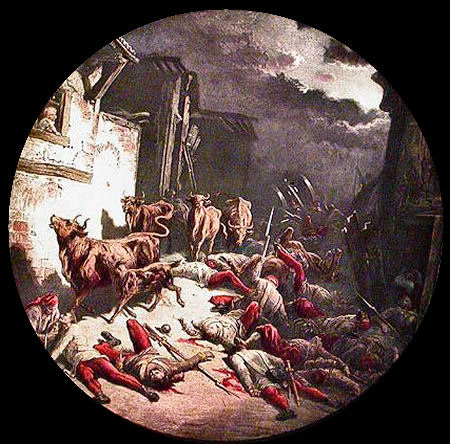 |
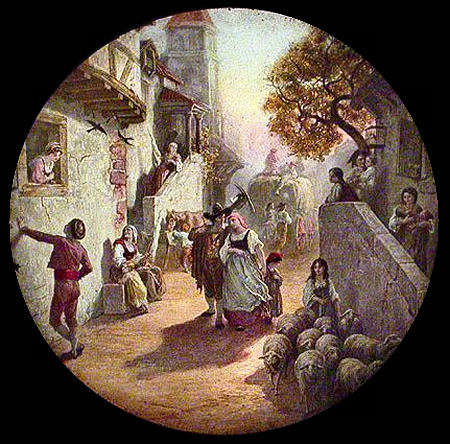 |
| War
and Peace. Two completely different scenes at the same location. The images are from the original illustrations by the
famous French printmaker and book illustrator Gustave Dore. Fitted in a
wooden frame, marked 'Dissolving Views, a. War, Dore.' and 'Dissolving Views, b. Peace, Dore.' |
|
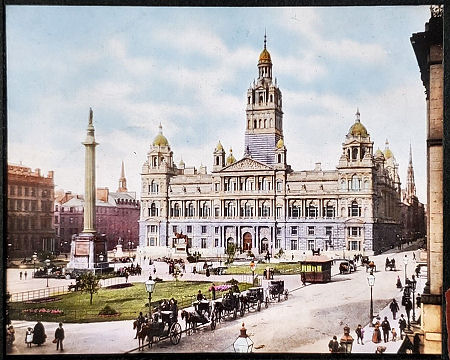 |
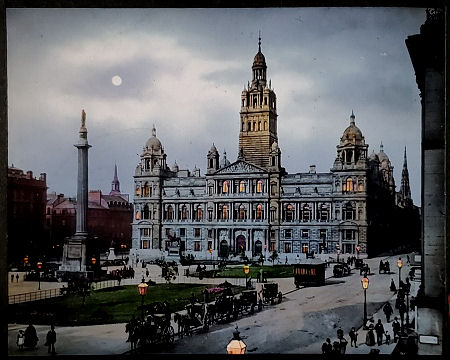 |
|
Glasgow,
City Chambers Scotland. Two photographic lantern slides that clearly
depict the same moment, judging by the people in them. They are both
tinted in different ways to create a day and night effect. The slides measure c.10 x 8 cm, the American size. |
|
 |
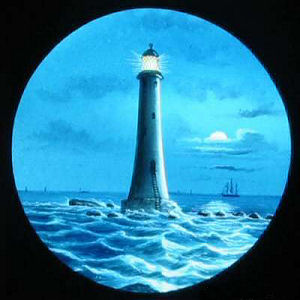 |
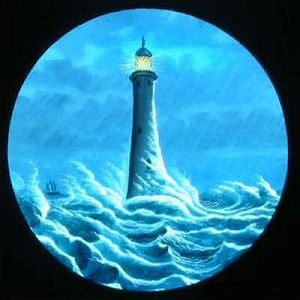 |
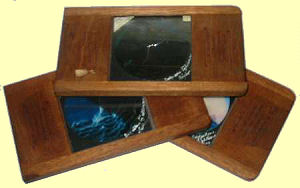 |
Excellent
hand painted three slide dissolve set of Eddystone Lighthouse, celebrated in
folk ballads and seamen's lore. The lighthouse is standing on the Eddystone Rocks, 14 miles off Plymouth,
England, in the English Channel. The slides are labelled 'day' ,'night' and 'storm'. They were made by the famous London slide maker Newton and Co, 3 Fleet street, London. The 3 1/4" slides are set in Mahogany frames measuring 7" x 4". |
|
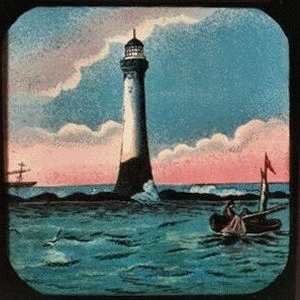 |
Another
set of magic lantern slides showing a lighthouse in different conditions,
during the day, at night and in a terrible storm. Naturally, projecting three-slide dissolving views required great dexterity from the lanternist. The help of an assistant was often called in for this. |
|
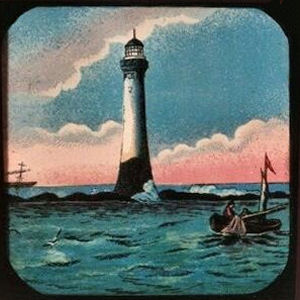 |
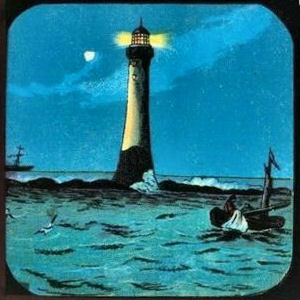 |
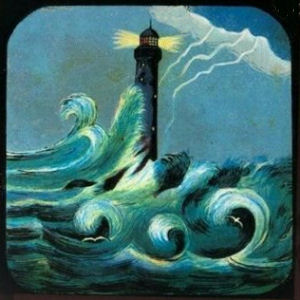 |
 |
 |
| Salisbury Cathedral, Wiltshire, England, seen during the day and at night.
English hand painted dissolve set of two 'day and night' slides, dating from the end of the 19th century. Mounted in a wooden frame, 7" x 4" (18 x 10 cm). |
|
 |
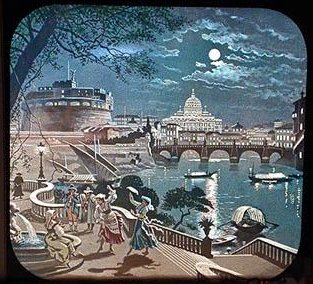 |
| Beautiful
'day and night' dissolve set of St Peter's Church -
Rome, #1 Day and #2 Night. Mounted in a wooden frame, 6 7/8" 4"
(17.5 x 10 cm). |
|
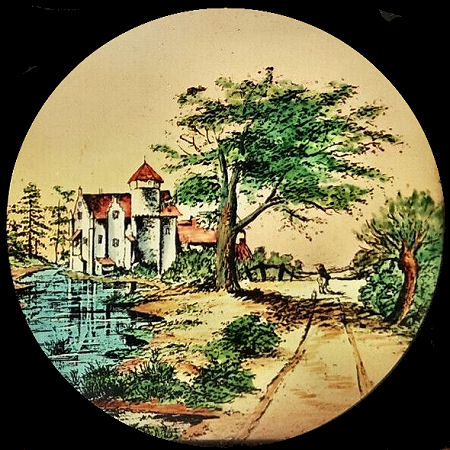 |
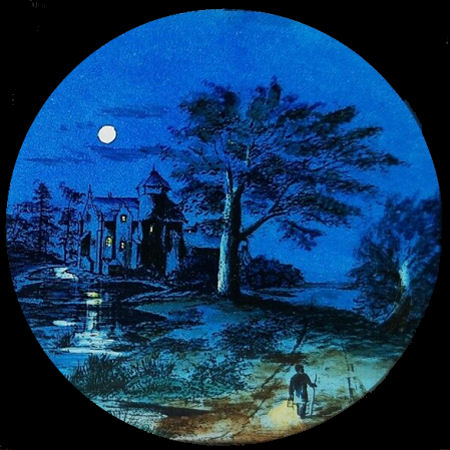 |
| Nice,
hand-painted change of day and night, placed in mahogany frames of 18 x
10 cm. A nice detail from the second slide: the light from the lantern
that the man carries in his hand is thrown onto the ground. |
|
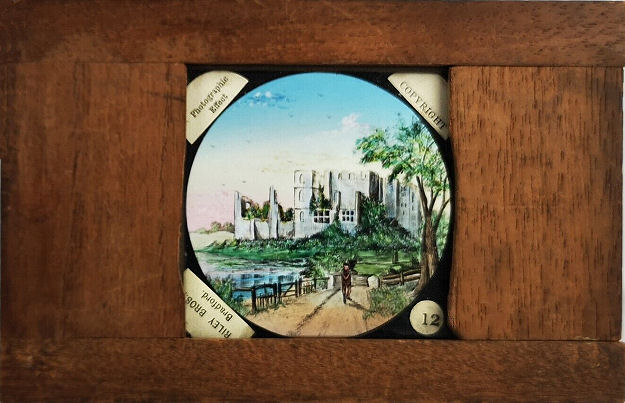 A hand-coloured set of three dissolving magic lantern slides. They show the ancient ruins of Kenilworth Castle, during the day, at night and in winter. This castle is located in the town of Kenilworth in England. It was originally built as a Norman fortress in the 12th century and was later expanded and improved over the centuries by various owners, including King John, Henri III and Queen Elizabeth I. The slides measure approximately 10 x 18 cm and have a label with the name Rilley Bros, Bedford. This company consisted more of supplying lanterns than manufacturing them. However, some sets of lantern slides were made in their own workshops. They also ran a successful slide rental department with a large stock of slides from all major manufacturers. |
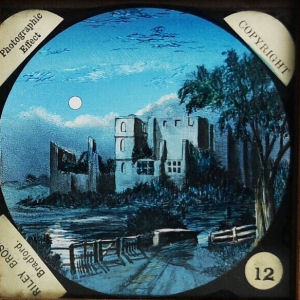 |
 |
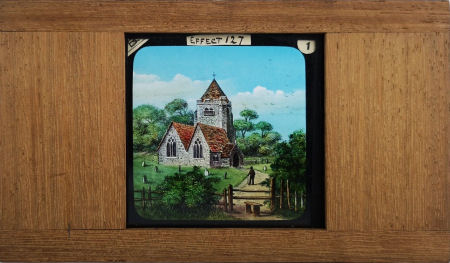 |
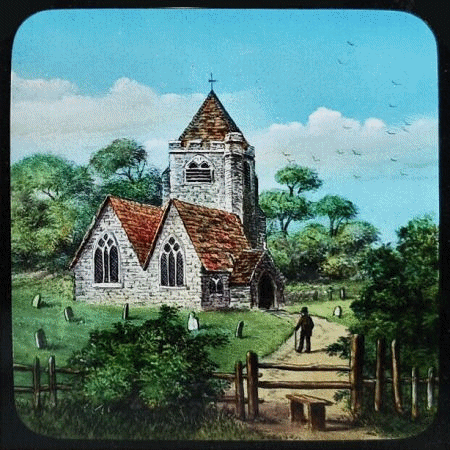 A beautiful pair of dissolving views 'DAY AND NIGHT '. Hand painted in a wooden frame. Dimensions are c. 18 x 10 cm. |
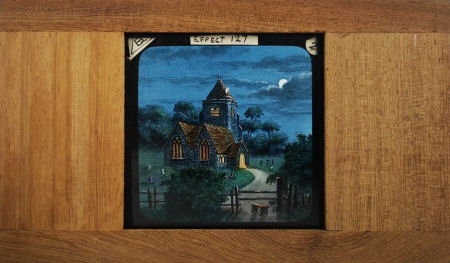 |
|
| See also:
Effect slides |
|
| |
©1997-2025 'de Luikerwaal' All rights reserved. Last update: 08-01-2025. |